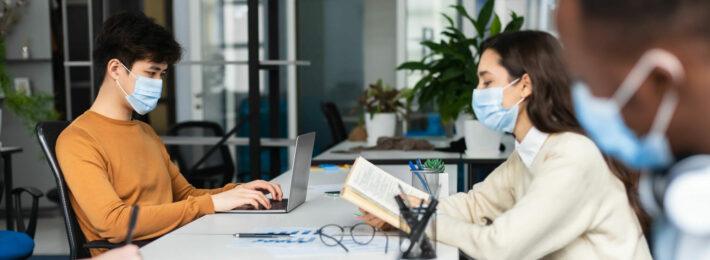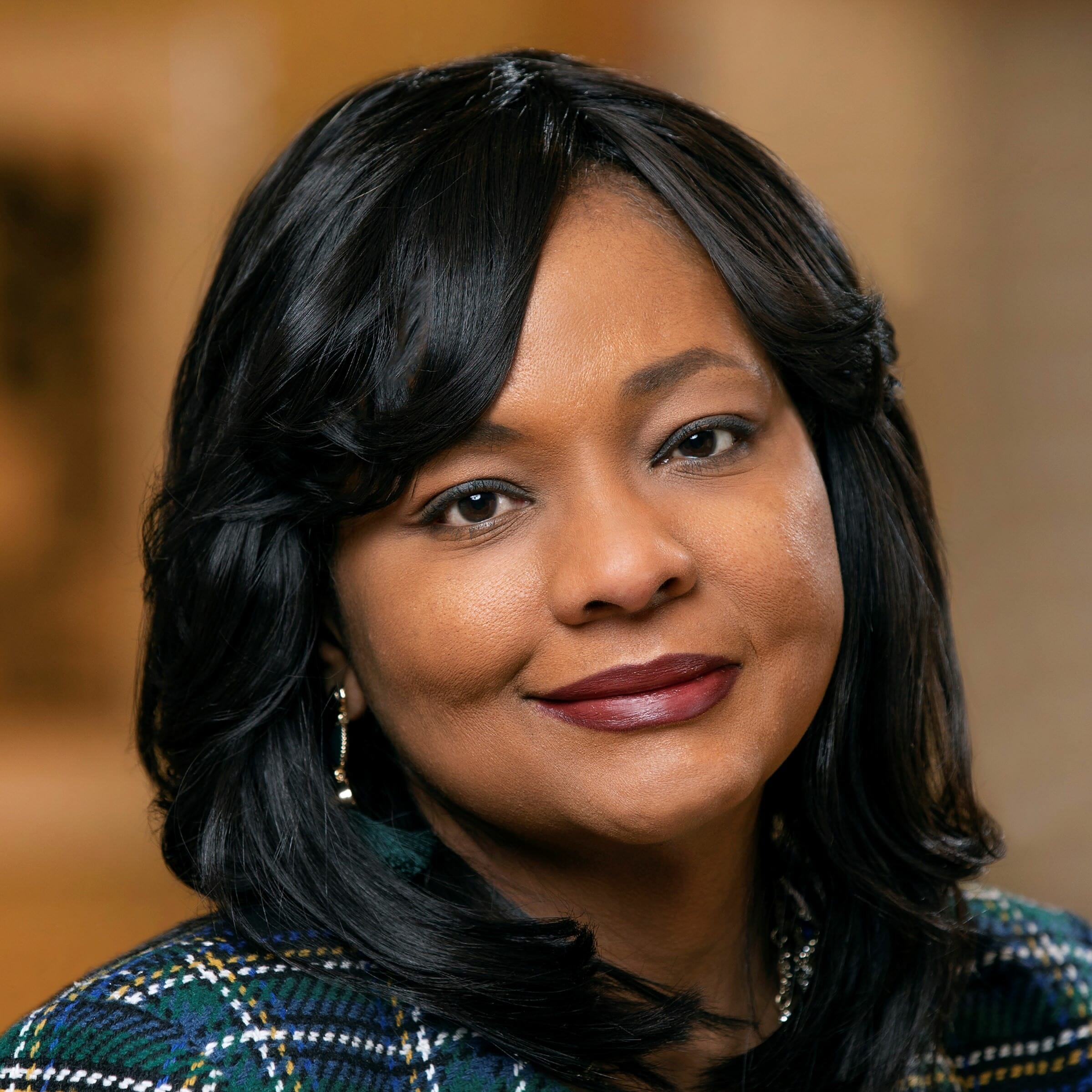
In June 2020, I was part of a group of higher education leaders interviewed by New York Times columnist Emily Bazelon regarding our expectations for what college would be like in the fall in the midst of a global pandemic. In this roundtable conversation, we explored questions regarding navigating COVID in classrooms and residence halls; the risks to students, faculty, staff, and how to limit exposure; how technology can assist us in early diagnosis and contact tracing; and more. Perhaps the numerous interconnected items we discussed should have signaled that leading during COVID, perhaps more than at any other moment, would demand collaborative, connected leadership, but that was not top of mind at that moment.
In fact, because I was transitioning between presidencies last summer, I had seen up close how two institutions were responding to the pandemic and felt equipped to make predictions about how COVID would unfold on college campuses. However, as most leaders recognize, for our own benefit and that of our institutions, it is important that we take time to reflect upon our vision, our actions, and our progress. As Steve Jobs famously said, “You can’t connect the dots looking forward; you can only connect them looking backwards.” Here’s how the dots ultimately connected and some of what I have learned since last June about what it means to be a campus leader during the pandemic.
A few spoiler alerts: between the June 2020 article publication and the start of the academic year, Hollins University, in response to feedback from faculty, staff, and students, decided to allow students and faculty to choose whether they would be face-to-face or remote and allowed staff, who were reasonably able to, to work from home. This felt like the most appropriate way forward, both in terms of public health strategy and compassion. Approximately 75% of our students returned to campus for face-to-face instruction, with 25% learning remotely; about 30% of our courses were completely online. I would not have predicted it in June but, looking back and connecting those dots, granting individuals choice in the matter was absolutely the right decision. I am grateful to those who learned and taught online, which helped us to de-densify the campus. We also amended our academic calendar, starting a week early and having students return home prior to Thanksgiving, concluding the final week of the semester fully online.
Over the course of the fall of 2020, Hollins University had a grand total of 15 COVID cases. Only two of those cases were among residential students; the rest were split between our faculty and staff and commuter students. We are extremely proud of the comprehensive testing protocol we developed with our partner, CoVerify Health, which assured us that the prevalence on our campus was extraordinarily low. In retrospect, I realize what enabled that success is not what I would have predicted in June.
Looking back, it was a seemingly unremarkable statement that I made in June actually mattered more than anything else: “I can’t imagine this working if it’s top-down. The community has to collaborate.” Hollins, like nearly every college and university in the United States, had a bevy of rules about how to navigate COVID: maintaining physical distance at all times, wearing masks (at all times), limiting group sizes, limiting classroom sizes. All of those rules were in play in June, and all of them certainly played a role in helping us navigate COVID during the fall semester.
Yet while we had a whole host of COVID-related rules, and consequences attached to violating those rules, what worked at Hollins was the fact that every person in our community took responsibility for ensuring our communal health and well-being. Not wearing your mask while visiting Hollins? Faculty, staff, and students would immediately remind you that you have to wear your mask at all times or be asked to leave the campus. Our six-foot measuring sticks and hula hoops became ubiquitous on campus to signal physical distance. Students were quick to remind local residents who walk the campus for exercise that they had to remain on the surrounding “loop” road and not enter the campus proper. Planning a rogue party on social media? Our students let us know! Our faculty who were present on campus became proficient at offering lectures and leading class discussions wearing their masks. All of our faculty, whether face-to-face or virtual, were at the ready to respond to questions about student well-being and explored ways to ensure academic rigor transcended teaching modality. Our faculty and staff who worked on campus remained masked and were limited or restricted from many student common areas (including the coffee shop!). Others made the sacrifice to work at home, helping with our dedensification efforts. Our communal instinct to reach out to one another shifted as we learned how to look into our students, faculty, and staff colleagues’ eyes and express the reservoir of meaning usually conveyed through, say, a hug or a smile.
While some will argue that it was merely our small size that made us successful, I believe it was our spirit and our will that made the semester possible. This collective sense of responsibility for our success led directly to as low a positivity rate as almost any college in the country. Yes, there was sacrifice involved. No, not everyone enjoyed the sacrifices. A literal and figurative price was paid. Without equivocation, campus life was not the same. How I wish I could say we had this low rate, and everything remained normal, but that wouldn’t be true. Still, a new normal of mutual accountability and collective responsibility emerged. And we will take these lessons from this with us well beyond COVID.
For example, consultation and transparent decision-making will continue to be critical to our institutional health. As we planned to resume on campus operations, we knew we also needed everyone in the community to have an “ownership stake” in our well-being. At the same time, taking responsibility for communal well-being also meant that the community had a voice in our decision-making. These were dots we needed, and will continue, to connect. For example, with regards to our reopening strategy, we surveyed students, faculty, and staff, and nearly 700 community members shared their feedback about what they needed in order to be successful in the fall, and we heeded that feedback. Our decision to amend our policy regarding teaching and learning online was just one key result of this process.
We also transparently shared that feedback with the entire community as decisions were made. Perhaps what was most important in our decision-making process was that we openly discussed how decisions would be made and why we made the decisions we made. The FAQ was no longer a repository of questions and answers, but a place to receive insight into what we prioritize as an institution.
In those middle days of the pandemic, the science was changing rapidly, and the second surge was swelling. Clearly, there was much to yet be understood. However, we felt strongly that our community could be partners in our thought process and deserved to know what would lead to decisions. Yes, public health advice and data would drive decisions, but we also let people know what judgment calls we would make and what principles would guide those decisions. We solicited and listened to feedback. And we shared what we did and, importantly, didn’t know. We were willing to revise decisions and explain why we changed course. For example, the testing strategy we originally considered was simply testing upon reopening. As we learned more from public health leaders, reviewed our own institutional priorities in this moment, and engaged in dialogue with our community, we chose to invest in a robust and significant semester- (now year-) long testing strategy. Our thinking was expanded as we heard and considered feedback from our community. By trusting our community to be thought partners, I believe more in our community felt ownership of our decisions as opposed to merely subject to them. Their ownership also helped generate compliance or co-ownership of responsibility.
To be clear, the invitation to shared decision-making, to robust discussion about what to prioritize in a moment rife with uncertainty, and to the call for expediency while being deliberate is a challenging leadership space to inhabit. However, even as the science was evolving before our eyes and public health guidance seemed to shift with the wind, we realized that we couldn’t just think about our immediate response and behaviors. We needed to address and consider the long-term consequences as well. Counterintuitively, perhaps, we decided to invite people into our thinking and understand not only what our decisions would mean in the short-term, but also the foreseeable long-term cascading consequences of each decision, both the knowns and the (many) unknowns. Yes, these frank conversations – often about institutional finances in the wake of COVID – raised concerns, but they were important to illustrate that immediate decisions had long-term ramifications. We needed to demonstrate why we were being deliberate in our decision-making and what guardrails were guiding us.
While we at Hollins can celebrate meeting the challenges of COVID, I don’t get to take the credit. This would never have worked top-down. It was the entire community’s effort. It was the belief in our desire to be together that made this semester possible. It was the belief that we should all have the chance to learn that made it possible. It was the belief we could take care of each other that made us subject ourselves to random testing week after week. What we had, as a community, was an unwavering belief in the value of who we are and what we do.
In fact, as I read back over my remarks and those of my esteemed colleagues in that New York Times interview, the second major lesson was around the power of believing in the transformational capacity of higher education. In the article, I asserted that the desire for transformation was a key reason why students would want to return to campus. For many students, the opportunity to be in community with one another, to take this one big chance of getting a college education, means more than anything else. For them, learning in person and in community outweighed the risk of the virus.
The transactional versus the transformational role of education is something educators often discuss as it relates to teaching and learning. I happen to believe that education has to power to transform lives when undertaken in an engaged community charting a course toward profound and lasting change. We know you cannot truly transform a person, nor a community, merely through top-down rulemaking and boundary-shaping. The work of transformation must be grounded in the mission, and it must push from the ground up and beyond the merely transactional. Likewise, successfully finding a way through this pandemic necessitated a belief we could build a transformative experience together, and a belief that this experience held its own value for us as a community and as individuals. It was about recognizing that you could trust, empower, and support your community to be transformative in how it approached every aspect of its life.
The Steve Jobs quote shared at the beginning of this piece reads in full: “You can’t connect the dots looking forward; you can only connect them looking backwards. So, you have to trust that the dots will somehow connect in your future. You have to trust in something—your gut, destiny, life, karma, whatever. This approach has never let me down, and it has made all the difference in my life.”
Since last June, I have learned that, as a leader, you have to trust in the transformative impact and ability of your community, always connecting those dots. And that makes all the difference.


